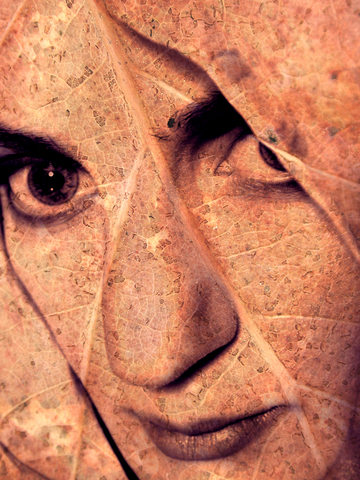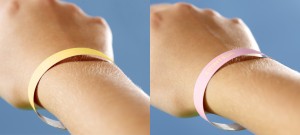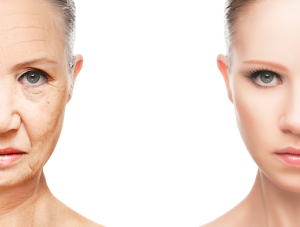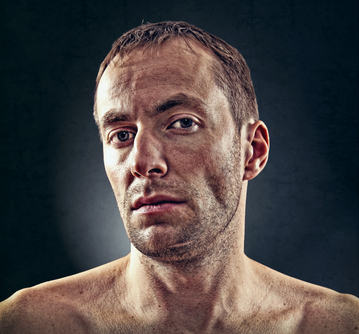Wednesday Bubble: Sunscreen and Skin Aging
I am bursting a big bubble today. The topic? Aging skin. Lord knows it’s a common theme among the women I know. And many women spend thousands (if not tens of thousands) of dollars on creams, lotions, botox, fillers, face lifts and the like to prevent wrinkles, make them disappear or preserve what they have.
Among the many culprits linked to aging skin, cumulative sun exposure is the worse. Ultraviolet (UV) light wreaks havoc directly on proteins and acids in the skin cells, impairs collagen and elasticity, and at its worse, promotes the development of skin cancer.
So short of spending thousands on the above, what can you do?
WEAR SUNSCREEN!
I can’t emphasize it enough.
Experts have been telling us for years that sunscreen can protect against the development of skin cancer. Guess what?! For the first time, researchers have shown the wearing sunscreen can also protect against skin aging. Moreover, a good sunscreen costs a heck of a lot less than costly cosmetic procedures that requires regular maintenance or endless surgeries to remove skin cancer patches.
In a newly published study appearing in the Annals of Internal Medicine, researchers assigned 903 adults under the age of 55 — most of whom were fair skinned and burned when exposed to acute sun — to two groups:
- Roughly half applied sunscreen, SPF 15, to their head, neck, arms and hands every morning and were asked to reapply it after spending several hours outdoors or after heavy sweating or bathing.
- Half were asked to apply sunscreen, SPF-15, at their discretion
- The study participants also received a daily beta-carotene capsule or a placebo
At both the study’s start and after about four and half years, the researchers took impressions of the back of every hand. To insure that the groups were ‘sticking with the program,’ so to speak, they were also asked to turn in suncreen and return the pill bottles for capsule counts every three months.
The findings? Well, at the start of the study, a little over half of the participants showed moderate photoaging; four years later, 49% had skin showing aging to the same degree. And, only the people who used daily sunscreen did not have a detectable increase in the severity of their photoaging. In fact, daily sunscreen users were 24% less likely than discretionary users to have experienced increased skin aging! The same findings were not seen among people with higher grade photoaging at the study’s start. And no differences were seen between beta-carotene and placebo tablet users. Importantly, the results did not appear to be linked to any change in time spent outdoors or in other sun protection methods.
The reason that the ‘under 55 set’ were chosen for the study is that the majority of their photoaging at this stage in their lives is due to sun exposures. So, the findings might not apply to adults older than age 55 whose aging skin is also due to other factors in addition to sun exposure. Still, the researchers say that a unit increase in photoaging grade is related to a visible deterioration in skin texture and an increase in visible small blood vessels and pores on the face. It also correlates significantly with a risk for keratoses and skin cancer.
Still unknown is whether or not a sunscreen with a higher SPF would achieve even greater results. And there are a few scientific limitations to the study; for example, a third of participants did not have skin impressions taken at the study’s start (although the researchers argue that this did not appear to affect the results), and the study numbers were too small to conclude a true lack of benefit with beta-carotene. Yet, what is clear is pretty simple:
Wear sunscreen. Not only will it help to protect against skin cancer but, it also appears to yield a cosmetic benefit, preventing visible aging. That’s a win-win in my estimation!
Read More
Got your skin(care) in the game of life?
Aging skin. It’s worth an occasional sigh, right? After all, at the end of the day, unless you are spending major dollars on a few nips and a few tucks and some filler and peels, well, you have to give into it.
Or do you?
The American Academy of Dermatology has issued a few wonderful tips on taking care of your skin in your 40s and 50s. I thought that I would devote today’s post to things you can do to promote good skin care:
- Protect your skin from the sun. Oh, my goodness; this should be a given at any age. With the surge in products to provide a healthy glow, there is absolutely no reason not to wear sunscreen and every reason to wear sunscreen. And as the AAD points out, protection against the sun is the formation of any skincare plan. The strategy is simple: try to avoid direct sunlight between the hours of 10 am and 2 pm, especially if your shadow looks shorter than you. Wear hats and definitely wear shades. And of course, wear a sunscreen product for the broadest protection possible. Personally, I use EltaMD UV Daily Broad Spectrum during the daytime, which my dermatologist specifically recommended for my skin type.
- Apply moisturizer daily. Oil production in the skin starts to decline around age 40 so moisturizing becomes ever more important thereafter. Many physicians say that the best time to moisturize is right after a shower or bath. Your choice of a moisturizing cream depends on your skin type, your problem areas and your individual make up. I have a mild form of rosacea and consequently, can’t use a lot of products without breaking out. Speak to a dermatologist if you have any questions about what you should use. And be mindful that your product choice may change over time.
- Wash away dirt and grime only twice a day. Did you know that your face washing habits actually affect your appearance? That’s why it’s best to wash with warm (not hot) water and use a mild cleanser in lieu of soap, which can be too harsh as skin begins to thin and lose elasticity. You should also avoid scrubbing too hard, especially if you are acne-prone. Many women experience acne during perimenopause and use and overuse of antiacne cleansers can be irritating. Rather, look for products that are non-comedogenic, nonacnegenic or oil-free.
- Stop smoking. I can’t emphasize this enough. Studies have suggested that tobacco smoke can lead to smoker’s face due to its effect on mast cells (cells that play an important role in fighting allergies and inflammation). Think of the Marlboro Man – rugged looks, i.e. dull and dry complexion, loss of skin firmness, premature lines and wrinkles may look sexy on a 30 year old but by the time you reach your 40s or 50s? Forgeddaboutit!
- Get enough sleep. Oy! This one is tough, especially during menopause. But sleep deprivation can affect the ability of the body (and the skin) to renew itself. Beauty rest? Indeed!
- Finally eat healthy foods and drink plenty of water. The AAD says that a healthy diet filled with fruits, vegs, lean proteins and healthy fats is an important key to healthy skin. And, data suggest that diet can affect multiple skin conditions other than aging, including acne, psoriasis and dermatitis.
Guyside: Your Skin
Bob is out today so I’m taking over Guyside this week. And what better than continue the topic that I started on Monday about skincare. Only this time, it’s the guys that I am most worried about. Did you know that not only has the bulk of research conducted on UV exposure and sun protection been conducted in women, but the few that have looked at men have discovered a rather troubling fact:
Guys are far less concerned about visible aging than women, in part due to different cultural pressures to retain a youthful look. But more importantly, when they skip the sunscreen, they do so because they actually like the effects of UV exposure on their skin. And, I am not referring to the glow of a tan but the ‘ruggedness’ of weathered skin.
When you go for rugged and weathered you may also be signing up for non-melanoma skin cancer (aka squamous cell), which men develop significantly more often than women. The reasons go beyond the lack of use of skin protection and cultural mores; laboratory studies in mice suggest that there are gender differences in how male and female skin reacts to UV light, and theoretically, men may produce less catalase, an enzyme that protects cells from damage.
It’s only squamous cell, right?! Well, hold on, because while it is not usually malignant, it can spread and cause serious complications when it gets into the lymph nodes. In some men, it’s a downright death sentence.
Getting back to the issue at hand: what does it take to get men to pay attention?
I’m not a man so I can only speak for the research. And in the scant research that has been conducted on this topic in men, the answer is pretty simple:
shock and awe.
In fact, when researchers gathered a small group of men between the ages of 18 and 34 and exposed them to a computer program that demonstrated their personal aging process based on UV and non-UV exposure, the guys who were immediately shocked by what they saw were the ones who indicated that the experience would affect their current use of sun protection agents and sun exposure behaviors. And among the ten guys who didn’t care? They tended to raise the positives about the way they appeared in the images.
“I think that I look quite tough…experienced…and weathered.” One man noted that he would have to be persuaded about the risk to his health.
It appears that on average, men engage in riskier sun exposure behaviors than women. Slapping on sunscreen is seen as feminine and some men are simply unfazed by facial aging, noting that wrinkles add character and rugged good looks.
But here’s the rub: after the rugged good looks phase come issues that are difficult to deal with. My dad, for example, grew up on a beach in the 30s and 40s. He’s spent his life having patches of skin removed and once handsome, he is simply an example of skin gone wrong.
Bottom line: sunscreen – wear it. And rugged good looks? All I can say is that some of you may remember the Marlboro Man. Four of these men died as a result of their behavior, in this case, smoking. But more importantly, statistics show that more than half of men don’t use sunscreen and about 71% don’t know squat about cancer warning signs.
Rugged good looks fade. Skin cancer doesn’t.
Read MoreGot skin in the game of life? You best take care of it!
 When it comes to health, many of us neglect our skin. But think about it: its protection allows us to function and when it is well cared for and it allows our inner beauty to shine through. And yet, few of us think beyond the obvious appearance issues to the fact that the effects of aging on skin can lead to certain dermatological conditions that cause illness and even death. Researchers say that in the U.S., a majority of people over the age of 65 have at least one skin disorder; in the UK, 70% of older people experience skin conditions, many of which are preventable.
When it comes to health, many of us neglect our skin. But think about it: its protection allows us to function and when it is well cared for and it allows our inner beauty to shine through. And yet, few of us think beyond the obvious appearance issues to the fact that the effects of aging on skin can lead to certain dermatological conditions that cause illness and even death. Researchers say that in the U.S., a majority of people over the age of 65 have at least one skin disorder; in the UK, 70% of older people experience skin conditions, many of which are preventable.
Guess what? I’m not simply talking skin cancer. Rather, I’m referring to dry skin, inflammatory eczema on the lower extremities, pressure ulcers (when an area of the skin breaks down due to pressure placed on it) tears, wounds itching and an increased bacterial and fungal infections.
The environment: Some of the challenges that we face are directly related to the environment. Factors like air pollution, smoking and of course, regular exposure to UV radiation can lead to deep wrinkles, age spots, and leathery appearance. The message is simple, if not obvious: don’t smoke, wear sunscreen and try to minimize regular exposure to smog infested cities (of course, the latter cannot always be avoided).
Physical factors: A condition known as xerosis cutis i.e. abnormally dry skin, occurs in up to 85% of older adults. It is related to a decline in skin fats and reduced secretion of sebum — the oily, waxy matter that is secreted to keep the skin lubricated and waterproofed. When the skin is abnormally dry, it can increase the inclination to itch and scratch, with in turn, may breakdown the skin and cause wounds and infections. Although there is little that can be done to avoid some of the natural processes of aging, it’s critical to avoid overwashing with soaps and detergents, both of which can remove grease from the skin and lead to scaling and itching. Importantly, air condition and heating. which dry out the air, can exacerbate dry skin and while humidity is uncomfortable, it’s critical. During winter, hydrate the air by running a humidifier. Regular use of emollient-rich creams and moisturizers, like Aveeno or Roc or Nivea can also ward off the time effects of dry skin. Be sure to read the label of popular moisturizers to insure that they contain humectants, which help draw water to the skin.
Another important consideration is the physical integrity of the skin and the way that the skin remodels itself as we age, increasing the predisposition to tears, wounds and pressure ulcers. Unfortunately, science has not caught up with the natural aging process and there isn’t a lot of strong evidence to support one strategy over another. There is indication, however, that knowing your risk before being exposed to situations that might cause pressure ulcers (e.g. bed rest) can help to insure that you take steps before they happen. Avoid rigorous scrubbing of the skin, especially over the bonier areas, as this can increase the risk of later problems. Treat stress incontinence or overactive bladder now, before it regularly exposes the skin to moisture that again, can cause problems down the line. And that eight glasses of water rule? It my actually help your skin in the long run – hydration is key! Avoid too much caffeine and insure that you are eating fruits and veggies with high water contents, like melon, tomatoes and lettuce.
An additional solution may be the use of 0.4% topical retinoids. Research has shown that retinoids can make skin look ‘more youthful, ‘ and may even increase the ability of polysaccharides to retain water in the outer skin layer and promote the production of collagen, which keeps the skin elastic. Additionally, some studies have shown that prolonged use of topical retinoids may improve the skin’s matrix, making it less susceptible to injury and pressure ulcers.
The bottom line is that our skin deserves a lot more attention than we give it and engaging in protective strategies now may result in a payoff later in life. Basic skincare is essential. There is no panacea but taking the appropriate steps will keep your skin the game of life longer.
Read More
Skin cancer, driving and technology
It’s Skin Cancer Awareness month, an important reminder to use sunscreen.
Indeed, according to recent estimates, skin cancer accounts for half of all cancers in the U.S. More than 3.5 million cases of basal or squamous cell skin cancer are diagnosed yearly; these types of skin cancer are generally found on the base or surface of the skin and can be cured if treated early enough. Melanoma — the most deadly of all skin cancers that affects the melanocytes, or cells that create skin pigmentation — accounts for more than 2/3rds of skin-cancer related deaths; this year, more than 76,000 cases are expected to be diagnosed. And, one person dies of melanoma in this country every 57 minutes.
In other words, skin cancer is not something to mess around with.
If you are like me, a child of the 60s and 70s, catching rays meant baby oil and tin foil. My father, who is in his late 80s, grew up on the beach and has spent the last 20 years having patch after patch of skin cancer removed. His body is a veritable skin cancer harvester, and he has even been permanently disfigured due to a botched procedure to freeze cancer cells below the surface of the skin on his nose. He’s lucky; he’s still alive and catching those cancers early enough.
I can’t emphasize it more: wear sunscreen. Moreover, wear it when you are in the car!
A study in last June’s issue of the Journal of the American Academy of Dermatology demonstrates that sun protection while driving is sorely lacking, despite the fact that driving evidently constitutes the largest percentage of total time spent outdoors, more than exercise or gardening. Moreover, on average, the majority of people in this country spend 80 to 100 minutes of their day in their cars.
Mind you, this is a retrospective study, which means that the researchers look back at events that have already occurred; this case, they mailed surveys to 675 patients who had previously attended a surgical clinic for skin cancer. Of all of these patients, 90% had a history of at least one type of skin cancer and 30, of malignant skin cancer.
Ironically? A majority did not believe that they needed to wear sunscreen while driving regardless of whether or not the windows were open or closed, although 53% of people with a prior history of skin cancer thought that they should wear it with the windows open. Real life use of sunscreen was different; about a third of these people reported wearing sunscreen “most of the time,” while only 15% used it while driving. What’s more, about a third of the people who reported wearing sunscreen most of the time while in a vehicle did not apply it to their arms or hands.
Additionally, having tinted car windows didn’t seem to provide additional protection. An equal percentage of people with or without tinted windows developed non-malignant skin cancer (85%); the only difference was the side of the body the skin cancer resided.
Here’s what you need to know:
- Automobile glass does not contribute to skin cancer equally. Important factors include the type of glass, the degree of tinting and the presence or absence of lamination or UV-absorbing film.
- In one study, clear auto glass transmitted 62% of UV radiation whereas dark-tinted glass transmitted 11.4%.
- Windshields are made from laminated glass that allows, on average, 2% transmission of UV radiation. Conversely, your side and rear windows are typically non-laminated and allow up to 80% of UV radiation. This means that the shoulder, arm and hand closest to the window needs to be protected because they are receiving the highest exposure to UV rays.
But, there’s a silver lining too!
Researchers at the University of Strahclyde in Glascow, UK have developed a monitor for preventing risk of overexposure to the sun. The device, which is called “Smartsun” is a waterproof wristband that changes color according to your amount of ultraviolet (UV) radiation exposure.
As exposure increases, the wristband turns from yellow to pink. 
The change in color is created by an acid-release agent that detects UV light and a dye to responds to pH levels.
Smartsun is currently available through UK retailers but global shipping is available through echemist. I don’t know about you but this seems like an easy way to keep track of sun exposure, even while driving.
Don’t mess with skin cancer. Wear sunscreen. And check out Smartsun!
Read More









